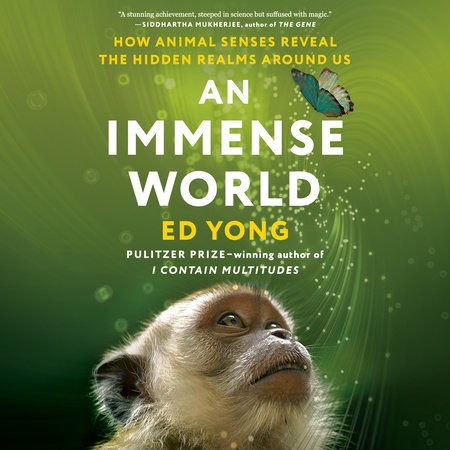How Animal Senses Reveal the Hidden Realms Around Us
Ed Yong, Knopf Canada, 449 pages
In 1974 the philosopher Thomas Nagel published an influential paper, “What is it like to be a bat?” in which he explored aspects of consciousness and perception in animals. He concluded, inter alia, that organisms can have conscious mental states if and only if there is a state of which it can be said that “this is how it is to be that organism.”
His argument was that animals have conscious experiences which are inherently subjective and thus forever outside of human experience and imagination: for example, we cannot imagine how to navigate the world with sonar to the same extent that bats do. “I want to know what it is like to be a bat,” Nagel wrote, “Yet if I try to imagine this, I am restricted to the resources of my own mind, and these resources are inadequate to the task.”
We don’t learn much from Yong about how it is to actually be a bat, a scallop or an electric eel, to mention just three of the many organisms whose sense organs (and, to a large extent, sensory experiences) he describes in this stunning book, but we sure learn a lot about how they experience the environment and react to stimuli.
Organisms have different sense organs and live in different surroundings. In 1909 the German biologist Jakob von Uexküll coined the term “umwelt” to define the sensory bubble in which organisms, including humans, live. This word, central to Yong’s book, does not refer to an organism’s surroundings as such, but specifically to its perceptual world:
“… a multitude of creatures could be standing in the same physical space and have completely different Umwelten.”
We of course all know that bats use sound frequencies to which humans are deaf, that some insects can see ultraviolet light and so on, but it is rather sobering to realize just how restricted our sensory bubble is in comparison to those of many other creatures.
Yong devotes each section of the book to the umwelten of various animals. Smells and tastes come first, followed by sight. I was charmed to read that someone had actually invented an ophthalmoscope to peer inside spiders’ eyes, because the vision of these animals have long fascinated researchers.
Another fascinating visual apparatus is found in scallops, which have small brains but in some species up to 200 quite complex eyes with two retinas each, while other bivalves such as mussels and oysters do not. Scallops can identify morsels of food drifting by and respond accordingly. Visual information, in other words, is transmitted to the brain, which then creates a picture of its surroundings. Or so we hope, but we don’t know for sure.
The question is just what is happening inside the scallop’s brain, such as it is. The situation is much more complex, and in fact downright mysterious, than we can imagine. The scallop neurovisual system differs greatly from that in humans: “Our brains combine the overlapping information from our two eyes into a single scene. A scallop could do the same across a hundred eyes, but that seems unlikely given how crude its brain is. Instead, each eye might simply tell the brain whether it has detected something moving or not. Think of the scallop‘s brain as a security guard watching a bank of a hundred monitors, each connected to a motion-sensing camera. If the cameras detect something, the guard sends sniffer dogs to investigate. Here’s the catch: The cameras may be state-of the-art, but the images they capture are not sent to the guard. All the guard sees on the monitors is a warning light for every camera that has spotted something.”
Well… this certainly opens the situation for discussion doesn’t it?
The book is filled with utterly captivating tales of various animals’ umwelten: the detection of and response to magnetic fields, pain, touch, awareness of impending earthquakes and… worm grunters. Yep, worm grunters. I was particularly charmed by the tale of the Sopchoppy Worm Gruntin’ Festival on page 199.
I have read before, as I suppose most of us have, about blind people using clicks to navigate a world populated by people who can see. Yong’s description of how Daniel Kish navigates his umwelt is not only fascinating but also filled me with admiration for his abilities.
The astonishing diversity of sense organs in the world (ears on knees, for example), the sensory inputs they process and the way organisms inhabit their sensory bubbles are wonderfully presented and described - one of the best books in this genre I have read for may years. Anyone with an interest in biology should purchase a copy.
The views and opinions expressed in this article are those of the author, and do not necessarily reflect the position of this publication.




